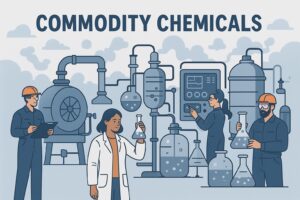| Core Business |
Manufacture of sponge iron, steel billets, ferro alloys, power generation, iron ore mining. |
Mining of lignite, bauxite, fluorspar, and manganese; power generation. |
Mining and processing of rare earth minerals, heavy minerals (monazite, ilmenite, zircon, etc.), and rare earth oxides. |
Diversified natural resources company with interests in zinc, lead, silver, iron ore, aluminium, copper, oil & gas, and power generation. |
| Primary Revenue Driver |
Steel, ferro alloys, power generation. |
Lignite mining, bauxite mining, and power generation. |
Rare earth processing and mineral sand mining. |
Mining and metals production including zinc, aluminium, iron ore, copper, and oil & gas. |
| Product Segments |
Sponge iron, billets, ferro alloys, captive power, coal mining. |
Lignite, bauxite, power generation. |
Rare earth oxides, mineral sands, thorium, zircon, etc. |
Zinc, aluminium, iron ore, copper, crude oil, natural gas. |
| Vertical Integration |
Partially integrated. Produces raw materials like sponge iron and consumes it internally. |
Partially integrated with lignite mining and power generation. |
Fully integrated mining and processing of heavy minerals. |
Highly integrated from mining to processing to finished metal production. |
| Government Involvement |
Private listed company. |
Government of Gujarat holds 74% stake. |
100% Government of India owned (DPSU – Department of Atomic Energy). |
Privately held (promoters include Vedanta Resources Ltd.). |




